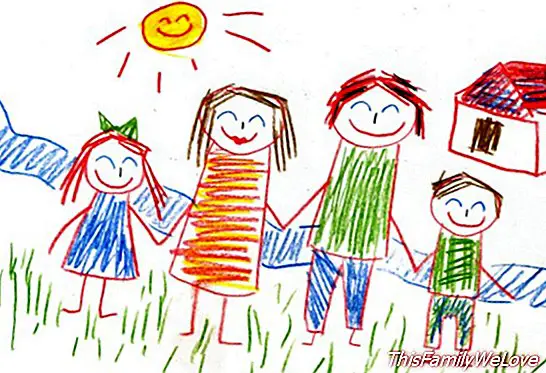Children's drawing, a tool for family communication
The drawings are another tool for the expression of children, through which they can communicate things that they do not do verbally. The artistic activity is one of the most gratifying expressions that the child finds in his maturational process and in relation to the world in which he moves.
The children's drawing is one of the most spontaneous manifestations of the child, that's why the children's drawing is a family communication tool very useful, which has been the subject of research from different approaches and conceptions.
Through the drawings of your son and his evolution you can know traits of his character (if he is nervous or calm); his cognitive maturity; how he lives his relationship with the environment (aggressively, safely / insecurely); or, if it presents or not an emotional conflict (jealousy, low self-esteem, etc.).
Tips for communication through children's drawing
1. While drawing, it is good to talk with the children, but only on occasion because if this is done with excess it will cease to be a spontaneous activity for him. You can ask them "where are they, what are they doing, if they are happy and if not, why?" Normally, your answers will say a lot about your personal experiences.
2. Give him many colors, colorful and enough paper so that you have the certainty that, even if you do not do a drawing well, you can do many more. Ask him to paint what you want, try not to give him clues, but if you need any to start do it.
3. Do not ask "what you want to say", that way you are stifling your creativity. Do not watch it closely, that to an adult also uncomfortable. Leave your space, you need time and freedom to create.
4. The richest in information is the drawing of the family, In fact, it is coined as a test to evaluate infantile affectivity (by the French psychologist Louis Corman) and it is logical since it is in the family where the most important affective relationships occur.

5. For children it is more accessible to offer an explanation through the drawing to be a really projective technique, unlike the verbal communication itself.
6. If you notice that your child has difficulty communicating, or intuite that you are suffering from something, you can use the drawing technique to express your emotions, especially your fears and concerns. Once you have some of them, if you deem it appropriate, go to the specialist who, along with other tools, will complete the diagnosis to be successful in helping you provide your child.
Jorge Bodes
Advisor: Macu Lluch Baixauli. Director of the Comprehensive Educational Counseling Center
You may also like:
- 10 Apps for children to draw
- The evolution of children's drawing




